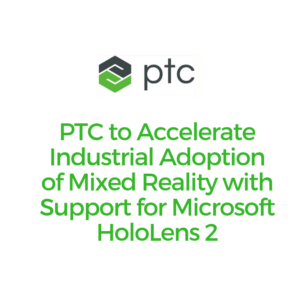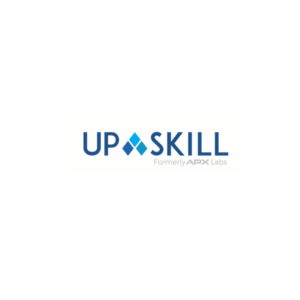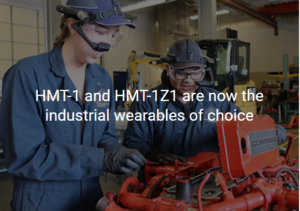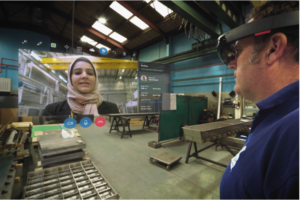Vuforia solutions give industrial customers an efficient and effective way to create AR/MR interactions that capitalize on Microsoft HoloLens 2 new gestures, voice enhancements, and tracking capabilities without the need for extensive programming or costly custom designers.
Today, industrial manufacturers face a growing shortage of skilled workers, high turnover, increasingly complex products, and fierce competitive pressures. Augmented and mixed reality help overcome these challenges and promote workforce efficiency by delivering information when and where workers need it most: in the real-world context of their daily work environment.
With the immersive “hands-free” experiences created with Vuforia Studio for HoloLens 2, industrial customers can empower their workers and improve their manufacturing, service, and training processes to unlock new business opportunities and better meet the needs of their customers.
“One of the key value drivers for AR/MR in the industrial space is improving worker efficiency with ‘hands-free’ procedural guidance and instruction,” said Jim Heppelmann, president and CEO, PTC. “Vuforia Studio’s efficient AR/MR authoring environment and HoloLens 2 usability and comfort enhancements are a winning combination for industrial manufacturers.”
Howden Creates Immersive Customer Experience with Vuforia and HoloLens 2
This week at Mobile World Congress, PTC and Microsoft will demonstrate how AR/MR improves worker efficiency with Howden, a Colfax company, that is using Vuforia Studio and HoloLens 2 to improve the service experience. Howden is a global engineering company with industrial products that help multiple sectors improve their everyday processes, from mine ventilation and waste water treatment to heating and cooling.
Reusing existing 3D models, Howden created scalable step-by-step mixed reality service instructions with Vuforia Studio. Incorporating real-time and historic IoT data from PTC’s ThingWorx® Industrial IoT platform and Microsoft Azure, Howden is enhancing their customer’s experience of owning the equipment.
“Our equipment typically operates as process critical, and our customers are looking to us for solutions to empower them on how to best service their equipment,” said Maria Wilson, Ph.D., global leader data driven advantage, Howden Group. “Using mixed reality rendered on Microsoft HoloLens, the customer experience is truly immersive. It provides insights into the operating conditions and performance of the equipment that they’ve never had before.”
Driving the Adoption of AR/MR in the Industrial Enterprise
This announcement heralds the next step in the PTC and Microsoft alliance that kicked-off in 2017 to help drive adoption of augmented and mixed reality in the industrial enterprise. Vuforia Studio and HoloLens 2 will enable content creators to leverage their existing 3D and IoT data from ThingWorx® and Azure to improve collaboration, understanding, and productivity in real world environments.
“The integration of Vuforia and Microsoft HoloLens 2 continues our collaboration with PTC and advances our efforts to provide transformative experiences for our customers within the manufacturing arena,” said Alex Kipman, technical fellow, AI and Mixed Reality, Microsoft. “We look forward to our collaboration providing innovative out-of-the-box solutions that accelerate the adoption of mixed reality in the industrial space.”
With Vuforia Engine, developers can also take advantage of HoloLens 2 advanced features to deliver unique, engaging, and interactive mobile experiences that bring people closer to brands and products.
As part of PTC’s ongoing initiatives to drive innovation and provide customers with the best solutions for addressing manufacturing, service, and training challenges, PTC’s Vuforia solutions will also leverage the recently announced Microsoft Azure Spatial Anchor Service in the future to enable more collaborative, cross-platform mixed reality experiences.









